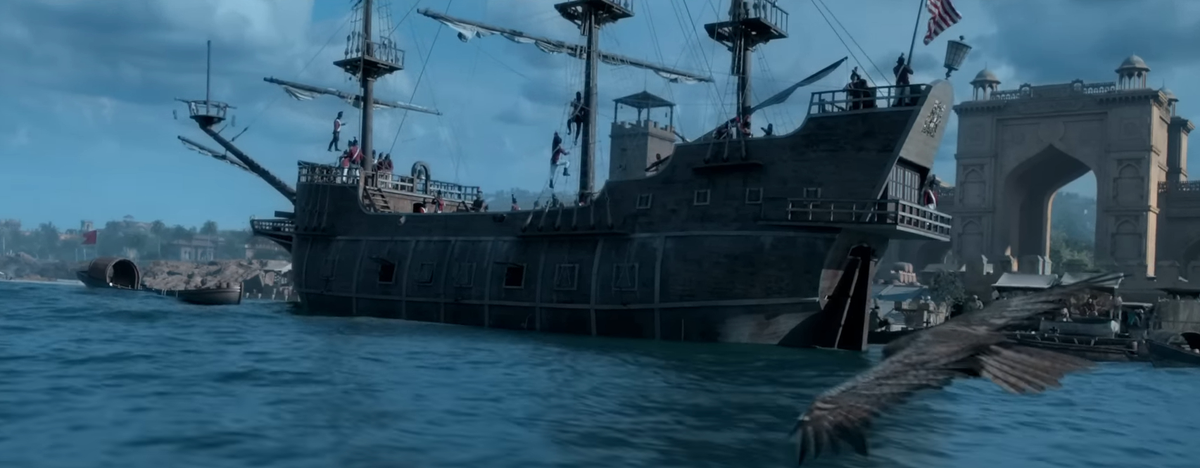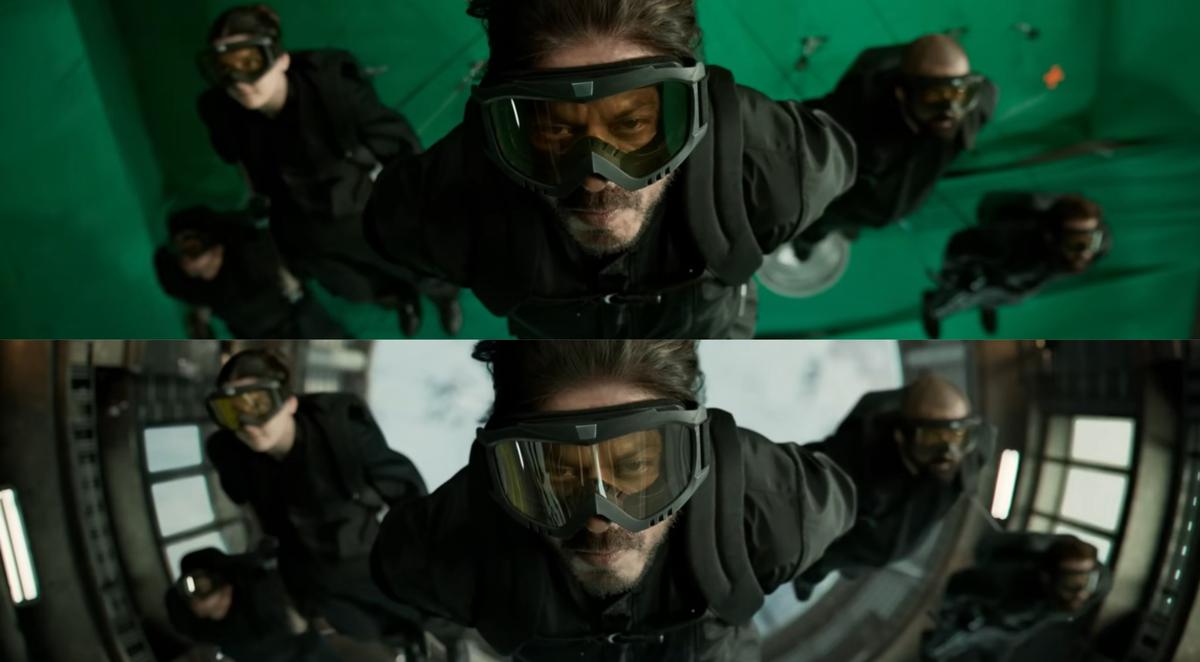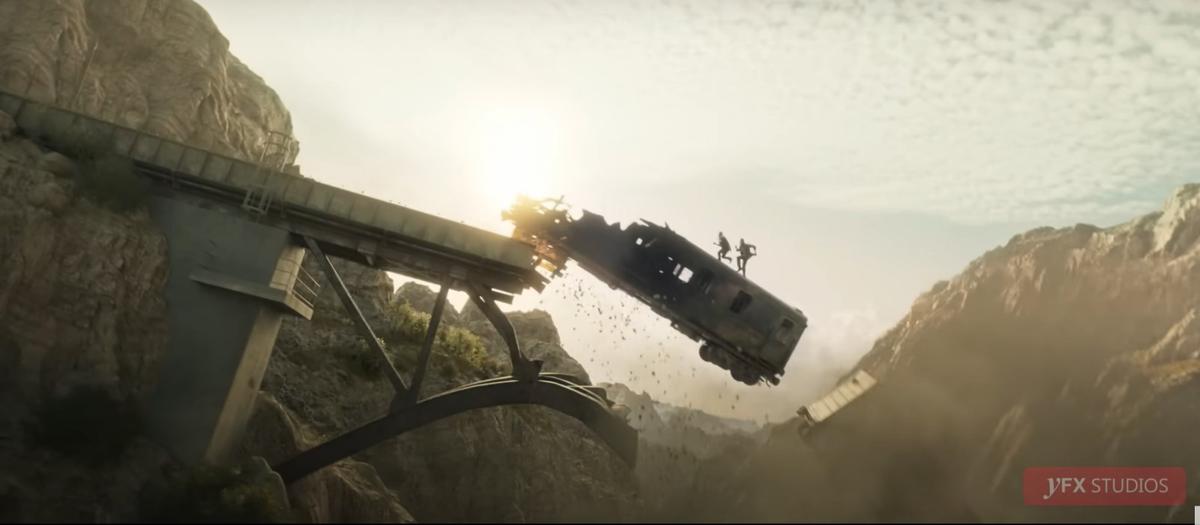From ‘Lagaan’ to ‘Pathaan’: How Sherry Bharda changed visual effects
When Sherry Bharda started out as a young VFX professional in the 1990s, work was, to put it mildly, rather limited. She worked primarily on small-format television commercials, doing logos and pack shots. Hindi films, too, were barely waking up to the potential of computer graphics. Along with Pankaj Khandpur, Sherry animated the logos of Dilwale Dulhania Le Jayenge (1995) and Mohabbatein (2000)—those drifting maple leaves were her doing—but there was no real challenge to fire them up.
Then, at the turn of the century, Aamir Khan and Ashutosh Gowariker came calling.
“I think my first major gig was the rainclouds we did for Lagaan,” recalls Sherry, who sat night upon night shaping and rendering the clouds to Aamir’s liking. Today, it’s considered kids’ stuff in her industry. Back then, however, machines were not friendly and rendering tools cumbersome. “We were using Alias | Wavefront in those days,” Sherry says. “Now you’ve really put paint to how old I am (laughs).”
The modern VFX industry truly exploded in India in the 2000s. This was the time big Hollywood studios started outsourcing their special effects work to Indian firms, encouraged by cheap labour and the software boom. Meanwhile, Bollywood films — desperate to compete with glossy American fare — started scaling up. Bangalore-bred Sherry, via her consecutive stints at Western Outdoor and Tata Elxsi, racked up an enormous filmography, with credits on everything from Dhoom and Ta Ra Rum Pum to Robert Rodriguez-Frank Miller’s Sin City. A frequent domestic client was Yash Raj Films, then experimenting with 3D animation in films like Roadside Romeo (co-created with Walt Disney Pictures India).

A still from ‘Thugs of Hindostan’
In 2016, Aditya Chopra asked her to build and run yFX, an in-house visual effects studio that will cater completely (though not exclusively) to YRF titles. This was perhaps a late realisation: Red Chillies Entertainment already had Red Chillies VFX, while Ajay Devgn FFilms had launched NY VFXwaala a year earlier. Sherry’s first undertaking in her new role was Sultan (2016), not exactly a showcase but a considerable project nonetheless. “We started out with a team of 50 people on Sultan. In 2023, we’re 250 strong. The scale of the films has quadrupled too.”
A big number was Thugs of Hindostan (2018), which, like its humongous 18th-Century trading ships, sank. . Sherry remembers the project fondly, despite its failure, particularly the complex water simulations (“one of the most difficult things in VFX”) and a stunning establishing shot of an eagle gliding in on a dockyard. “It was layers and layers of work and the timing had to be just right. A small part of the dock was shot live but we threw that away and it became a fully CG (computer-generated) shot.”

From the vfx reel of ‘Pathaan’
Sherry’s recent victory was Pathaan, the highest-grossing Indian film of 2023. The spy thriller, directed by Siddharth Anand and heralding a career comeback by Shah Rukh Khan, was all but derailed by the pandemic, with restrictions on location shooting and large-scale crowd movement. Sherry and her team responded with grit and resourcefulness. The Dubai sequence, for instance, where SRK and John Abraham go head-to-head on a moving truck, was augmented with virtual backdrops. Sherry says they analyse Geographic Information System (GIS) data and use LiDAR (Light Detection and Ranging) to scan big cities. A complicating factor is lighting, which has to remain uniform so digital assets can integrate seamlessly with live-action footage. “We recreated the whole city so we could match the interactive lighting on the actors.”
Pathaan would also have flubbed its most iconic sequence if not for the good folks at yFX. Late in the film, Tiger (Salman Khan) swoops down for a train rescue, occasioning the Indian equivalent of a whistle-worthy Marvel team-up. The effects in this sequence are bombastically large, in keeping with director Sidharth Anand’s bang-for-buck vision. What it lacks in photorealism, it more than delivers in raw adrenaline. “The train had to move faster, the bridge had to explode and the gorge had to look deeper… There is a limit to which the actors can perform such death-defying stunts, obviously.”

The iconic train ambush in ‘Pathaan’
Sherry emphasises structure and specialisation in the day-to-day running of a VFX house. At present, 50% of her team is commited to CG work, with further subdivisions for asset building, textures and high-end simulations. Others work on compositing and prep. There is a different team for clean-up services like rig and harness removals. The company is using machine learning to automate routine tasks and optimise pipelines. “The idea is to free up our artists so they can concentrate on bringing visual excellence to their shots,” says Sherry, who, along with Srinivas Mohan, was invited to join The Academy of Motion Picture Arts and Sciences in 2019.
Bolstered by the successes of Pathaan and War (2019), Yash Raj Films is betting large on its expanding Spy Universe. Their next, Tiger 3, is in the final stages of production (it will be followed by War 2 and Tiger vs Pathaan). Director Maneesh Sharma (Tiger 3) is not known for action spectacles, though he experimented extensively with visual effects in Fan (2016). “With Maneesh, there is mutual respect between our departments because he knows that he’s in safe hands,” Sherry says. “His point of view is clear and concise, so it’s a great collaboration.”
Did we mention photorealism? Films like Pathaan, Baahubali1 and 2, RRR and Brahmastra have expanded the canvas of blockbuster filmmaking in India. Yet, there is always a niggling sense that our movies, in a bid to out-scale each other, tend to sacrifice detail and fidelity. The condescending assumption for long has been that Indian audiences are more forgiving than their western counterparts. This is increasingly not the case (as the makers of an upcoming mythological epic rudely discovered last year, leading to an effects refresh).
Sherry, asked to weigh in on the realism-vs-scale debate, contends that one does not preclude the other.
“The shots have to look real regardless of the scale.” Has she ever had to compromise on the believability of a shot? “I don’t know if compromise is the word, but you’re eventually working towards a delivery schedule, so you have to be able to put your best foot forward and make sure that the shot which we call the money shots looks spectacular.” This, at times, can mean a trade-off between delivery and “where to put your time and effort”.
Sherry agrees that in today’s day and age, exposed to global cinema, Indian audiences wouldn’t accept anything inferior. “If you find moviegoers wincing while watching your visual effects, then you’ve not done your job.”
For all the latest Entertainment News Click Here
For the latest news and updates, follow us on Google News.
